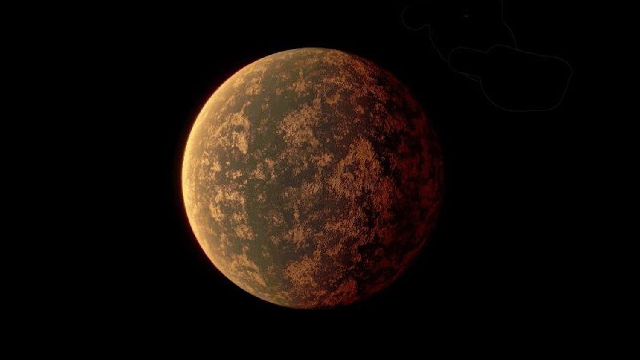Exoplanet still has a few things to offer, however.
This article on the study of the atmosphere of an exo-planet would be suited to students studying Earth and Space Sciences and Physical Sciences in years 5, 7, 8, 9, 10, and senior secondary.
In context math questions and an additional activity are included.
Word Count: 526

Scientists using a pair of NASA space telescopes have had their first opportunity to peep at the atmosphere of a rocky, Earth-sized exoplanet.
Unfortunately, they came up empty handed. “There’s hardly any atmosphere at all,” says David Latham, an astronomer at the Harvard & Smithsonian Center for Astrophysics, Cambridge, Massachusetts.
“There might be just the barest whiff of an atmosphere, but [that’s all].”
It was a disappointment, but not a surprise, because other than its size and rocky composition, the planet in question isn’t actually all that earthlike.
Named LHS 3844b, it measures about 1.3 times the Earth’s diameter, and was discovered in 2018 by NASA’s Transiting Exoplanet Survey Satellite (TESS), orbiting a red dwarf star 48 light-years away.
It hugs so close to its star, however, that it completes a full circuit once every 11 hours – close enough that it always keeps one face toward its sun, just as the Moon always keeps one face toward Earth.
To see if it has an atmosphere, Latham’s team used NASA’s Spitzer Space Telescope to study variations in infrared light emissions from the planet during the course of its orbit.
In doing so, they took advantage of the fact that LHS 3844b’s orbit is edge-on to our line of sight, meaning that it passes directly between us and its sun.
When it goes in front of its sun, we see a dip in the star’s light, but we also see the infrared heat signature of the planet’s night side.
Later, just before the planet passes behind its star, we see both the entire disc of its star, plus the heat signature from the planet’s full dayside. Then it passes behind its sun, so that all that’s visible is the star itself.
From this, it’s possible to map how thermal infrared emissions, and therefore temperatures, vary from day side to night side, Latham says. “It’s a neat experiment.”
The dayside turned out to be extremely hot – somewhere around 770 degrees Celsius — while the night side wasn’t all that far above absolute zero.
Even with an atmosphere, LHS 3844b would still be a world of extremes. But an atmosphere would also generate enormous winds, Latham says. “They would carry some of the dayside heat to the back side, and it wouldn’t be that cold.”
Not that all rocky exoplanets are expected to be the same way. LHS 3844b “is so close to its star that its atmosphere has been blown away”, Latham says.
And the study is a major step toward proving that we can indeed study the atmospheres of planets circling other stars.
“In this case, the answer appears to be that the planet does not have an atmosphere,” says Latham’s colleague Laura Kreidberg, another astronomer at Harvard & Smithsonian, who is lead author on the team’s paper, in published in the journal Nature.
“But I’m not worried,” she says. “Other planets (with lower temperatures) may have an easier time keeping their atmospheres, and my hope is that future observations will tell us how often and under what circumstances atmospheres tend to survive. That will be a big clue in the search for life on other planets.”
Login or Sign up for FREE to download a copy of the full teacher resource





